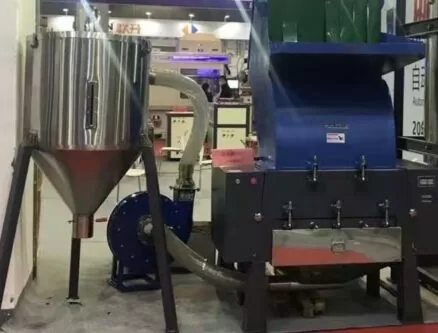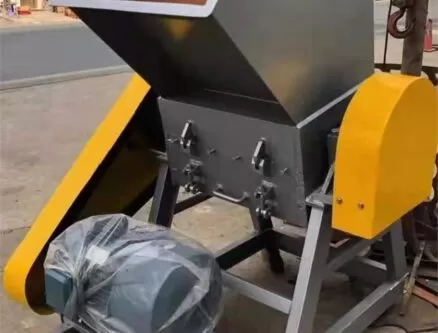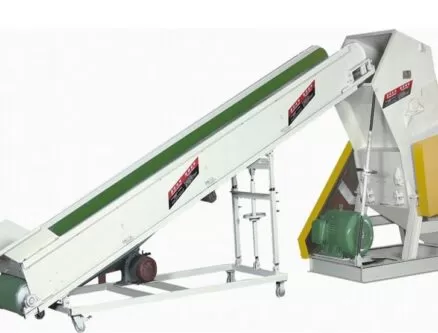Every time I visit a high-pollution industrial zone, I feel like I’ve stepped into a smoky movie scene—except nobody’s enjoying it. The piles of waste, the plastic debris, the choking air quality, all scream for a solution. Businesses struggle with waste buildup, local governments face public outrage, and communities suffer health risks. Without effective recycling intervention, these areas risk drowning in their own plastic footprint. Something has to change, and fast.
The solution? Plastic crushing equipment has proven to be a game-changer in high-pollution areas. By breaking down bulky plastics into manageable granules, it reduces landfill pressure, improves recycling efficiency, and gives businesses a cleaner, greener reputation. I’ve personally seen companies transform not only their operations but entire communities by integrating these machines into their workflow. That’s the power of applying technology where it hurts the most.
Stick around, because I’ll share real success stories from places you’d never expect recycling to thrive.

Why are high-pollution areas desperate for plastic solutions?
High-pollution zones are hotspots where industrial growth and environmental neglect collide. According to waste management statistics, over 70% of unmanaged plastic waste comes from such regions. The lack of infrastructure makes plastic disposal chaotic, and landfills quickly overflow.
These areas need fast, scalable solutions. Traditional waste collection can’t keep up, but crushing machines bring immediate relief. They reduce the bulk, simplify transport, and create raw material that recycling plants can actually use.
How does crushing equipment actually work?
Let’s not overcomplicate it. A plastic crusher shreds, grinds, and reduces plastic waste into smaller pieces. Think of it like giving waste a haircut—suddenly it’s lighter, easier to handle, and ready for transformation.
Different crushers handle different plastics—PET bottles, PE films, PP containers, even hard-to-break ABS or PVC. A good machine comes with hardened steel blades and energy-efficient motors, ensuring both durability and lower costs. Technical reports show that proper shredding increases recycling efficiency by up to 40%.

Can this technology really improve community health?
Absolutely. One of the overlooked benefits of plastic crushers is their indirect impact on public health. Fewer piles of unmanaged plastic mean fewer breeding grounds for pests, less open burning, and lower microplastic pollution.
In a city I visited in South Asia, local hospitals had data linking high respiratory issues to uncontrolled burning of plastic waste. After recycling plants adopted crushing technology, the number of burning incidents dropped significantly. According to health impact data, communities near organized recycling facilities report 25% fewer respiratory complaints.
What are some successful business cases?
Case 1: In a heavily polluted Chinese industrial zone, one of our clients installed a line of crushers for post-consumer plastics. Within six months, they reduced landfill waste by 35%. More importantly, they began selling the shredded plastic as raw material, turning waste into profit.
Case 2: In South America, a packaging company facing public backlash for its environmental footprint invested in high-capacity shredders. Not only did they cut down their waste exports, but their brand reputation skyrocketed. Case studies reveal over 50% of companies report cost savings within the first year of using crushers.

How do governments view these solutions?
Governments love solutions that reduce complaints without draining their budgets. Many municipalities are now promoting crushing technology as part of integrated waste management. It’s cheaper than building new landfills and far more sustainable.
For example, in Eastern Europe, subsidies are offered to companies adopting crushers. According to policy research, over 40% of recycling grants now target equipment installation. I’ve even sat in meetings where mayors directly asked us how quickly crushers could be deployed to calm community anger.
Are there limits to what crushing can achieve?
Yes, and I’d be a terrible CEO if I pretended otherwise. Crushers aren’t magical vacuum cleaners that swallow pollution. They’re the first step in a chain. After crushing, plastics must be washed, sorted, and reprocessed.
That said, without crushing, the whole chain collapses. Imagine feeding a recycling extruder giant barrels or tangled films—it’s like asking someone to swallow an entire watermelon. Crushing is the essential “prep work” that keeps recycling plants alive. Process efficiency studies show crushers reduce overall recycling costs by 20-30%.
What about innovation and future improvements?
Innovation is what excites me most. We’re now seeing crushers with smart sensors, energy-saving designs, and automated feeding systems. AI monitoring even predicts blade wear before breakdowns happen.
At Amige, we’re experimenting with modular crushers that can be upgraded as demand grows. Why? Because high-pollution zones rarely stay small—once the process works, demand doubles. According to market forecasts, the plastic crushing market is expected to grow 15% annually in developing regions.

Final thoughts
High-pollution areas don’t need sympathy—they need solutions. And plastic crushing equipment has already proven it can turn waste chaos into organized opportunity. From boosting recycling rates to improving community health, its impact is undeniable.
In my eyes, every polluted city has two choices: drown in plastic, or crush it into a new future.
